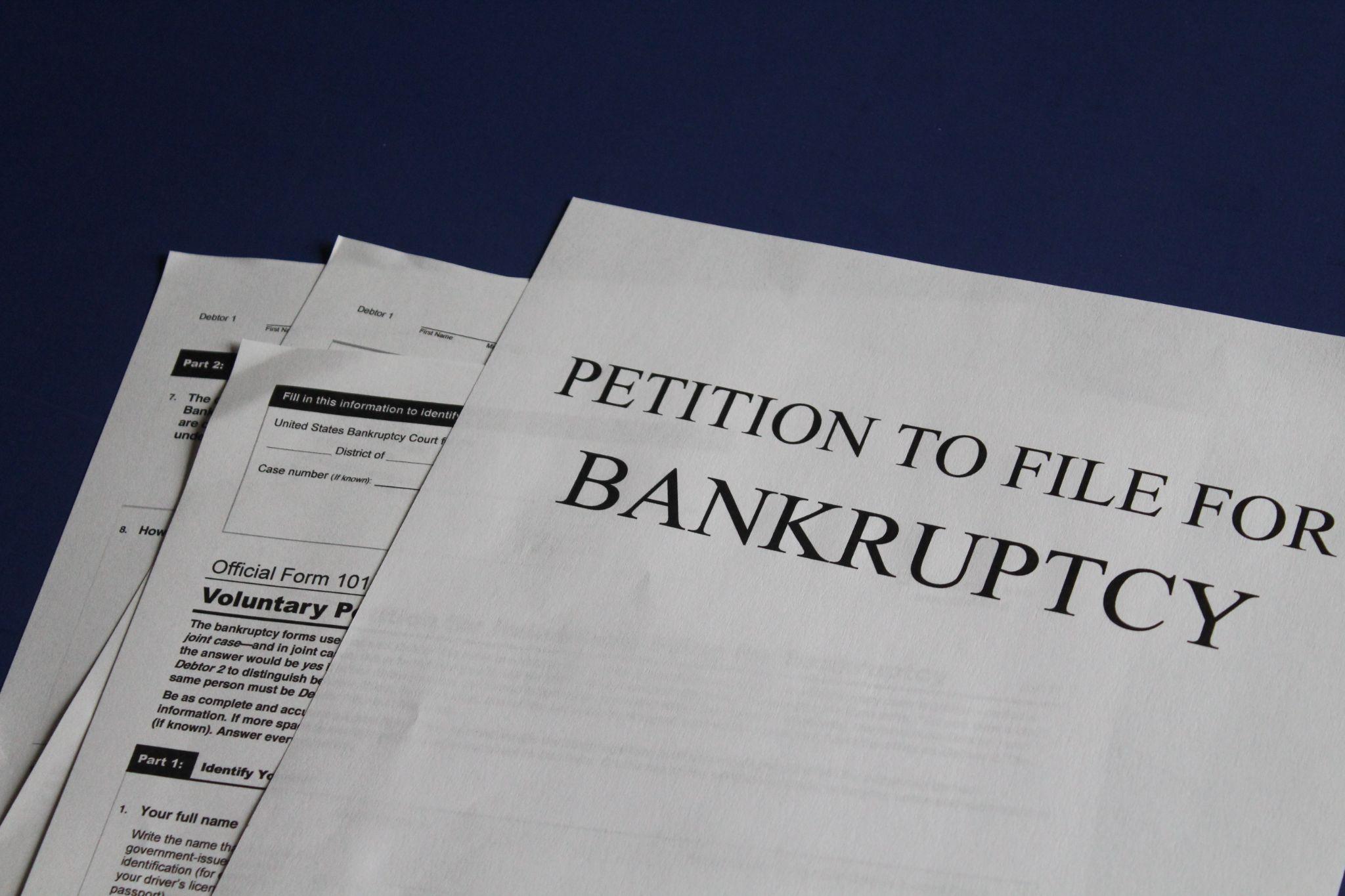What happens when bills keep stacking up faster than income can cover them? For many Texans, this question has become painfully real. Consumer debt in the United States climbed to record highs in 2024, with credit card balances alone surpassing $1.21 trillion. In Texas, where housing costs, medical expenses, and interest rates have all risen sharply, more households are now facing financial distress than at any point in the past decade.
Bankruptcy can offer a lawful path to start fresh. Yet, filing for bankruptcy relief in Texas is not simply about filling out forms or erasing debt—it’s a structured legal process that demands care, documentation, and informed decisions.
This guide explains each stage of filing for bankruptcy in Texas in 2025—who qualifies, how to file, what forms are needed, and what to expect from start to finish. It also highlights current trends shaping bankruptcy filings and how professional legal guidance from a qualified bankruptcy lawyer can help Texans move forward with clarity and confidence.
Understanding Bankruptcy Relief in Texas
Bankruptcy is a federal legal process designed to help individuals and families manage or eliminate debts they can no longer afford. While it is governed primarily by federal law, certain exemptions and procedures differ by state, making Texas-specific knowledge essential.
For most consumers, two types of bankruptcy filings apply: Chapter 7 and Chapter 13.
- Chapter 7 Bankruptcy: Often referred to as “liquidation bankruptcy,” this option allows eligible filers to discharge most unsecured debts—such as credit card balances and medical bills—after certain non-exempt assets are sold to repay creditors.
- Chapter 13 Bankruptcy: Known as “reorganization bankruptcy,” this chapter allows individuals with steady income to repay debts through a court-approved plan, typically over three to five years.
Choosing between these two depends on several factors—income, assets, types of debt, and long-term financial goals.
Step 1: Assessing Whether Bankruptcy Is the Right Option
Before filing, it’s vital to confirm whether bankruptcy truly fits the financial situation. Some Texans can resolve debt through negotiation, settlement, or repayment plans, while others need formal legal relief.
- Key signs that bankruptcy may be appropriate include:
- Minimum payments no longer cover interest charges.
- Frequent use of new credit to pay existing debt.
- Persistent collection calls or lawsuits for unpaid bills.
- Risk of losing essential property such as a home or vehicle.
A bankruptcy attorney can review income, assets, and liabilities to determine which chapter fits best and whether the filer meets the eligibility standards. This early assessment helps prevent mistakes and avoids unnecessary delays later in the process.
Step 2: Completing Mandatory Credit Counseling
Federal law requires anyone seeking bankruptcy relief to complete an approved credit counseling course within 180 days before filing. The goal is to ensure that every filer understands alternatives to bankruptcy and receives objective financial education.
The session, usually available online or by phone, results in a certificate of completion that must be filed with the bankruptcy petition. Without it, the case cannot proceed.
Step 3: Gathering Required Financial Documents
Documentation plays a major role in every bankruptcy case. Texas filers should organize all relevant financial records before submitting any paperwork.
Essential documents typically include:
- Recent pay stubs or proof of income
- Federal and state tax returns (past two years)
- Bank account statements
- Vehicle titles and home mortgage statements
- Credit card and loan statements
- Monthly living expenses
- Property valuations or appraisals
This paperwork establishes a clear financial picture, helping the court and the trustee verify eligibility and calculate exemptions.
Step 4: The Means Test for Chapter 7 Eligibility

Not everyone qualifies for Chapter 7 bankruptcy. To prevent abuse of the system, federal law requires a means test, comparing the filer’s income to the median household income in Texas.
- If income is below the state median, Chapter 7eligibility is automatic.
- If income is above the median, a detailed calculation determines disposable income after necessary living expenses.
Those with significant disposable income may instead need to file under Chapter 13. A knowledgeable Chapter 7 bankruptcy attorney can assist in accurately completing this test and interpreting the results.
Step 5: Completing and Filing the Bankruptcy Petition
The official bankruptcy petition is a comprehensive packet that outlines every aspect of the filer’s financial condition. It includes schedules of assets, debts, income, expenses, and a statement of financial affairs.
Filing this petition formally begins the bankruptcy case. At that moment, an automatic stay takes effect, halting most collection efforts—including phone calls, letters, lawsuits, and foreclosure actions.
The petition is filed electronically with the U.S. Bankruptcy Court for the Southern District of Texas (or another district, depending on residence). Filing fees apply, though individuals with limited income may request to pay in installments or seek a waiver.
Accuracy is critical. Any errors or omissions can cause delays or even dismissal. Many consumers rely on a bankruptcy lawyer to ensure compliance with all procedural rules and documentation standards.
Step 6: Trustee Appointment and Case Review
Once the petition is filed, the court assigns a bankruptcy trustee to oversee the case. The trustee’s role differs depending on the chapter:
- In Chapter 7, the trustee identifies non-exempt assets that may be sold to repay creditors.
- In Chapter 13, the trustee reviews the proposed repayment plan and ensures creditors receive appropriate distributions.
Within about 30 days of filing, debtors must attend the 341 Meeting of Creditors. Here, the trustee asks questions under oath about the bankruptcy documents. Creditors may also attend, though they rarely do.
As long as the filer is honest, cooperative, and properly prepared, this meeting typically lasts less than 15 minutes.
Step 7: Texas Bankruptcy Exemptions—Protecting Property
Texas is known for having some of the most generous bankruptcy exemptions in the country. These laws define what property debtors can keep during bankruptcy.
Common exemptions include:
- Homestead exemption– Protects a primary residence regardless of value (within acreage limits).
- Personal property– Certain household goods, clothing, furniture, and tools of trade.
- Motor vehicle– One vehicle per licensed household member.
- Retirement accounts– Most pensions and qualified retirement plans are fully exempt.
- Insurance benefits– Some life insurance cash values and proceeds.
Filing correctly to claim these exemptions ensures Texans retain essential property while still obtaining meaningful debt relief.
Step 8: Chapter 7 Process—Liquidation and Discharge
If the case qualifies for Chapter 7, the trustee reviews the exemptions and sells any non-exempt property to repay creditors. Most filers, however, keep all or nearly all assets because of the broad exemptions available in Texas.
After the process concludes—generally within three to four months—the court issues a discharge order eliminating qualifying debts. This typically includes:
- Credit card balances
- Personal loans
- Medical bills
- Certain judgments
However, some obligations, like child support, most student loans, and certain tax debts, remain due.
This discharge represents a legal reset: creditors can no longer collect on the eliminated debts, giving the filer a clean financial start.
Step 9: Chapter 13 Process—Repayment Plan
Those who do not qualify for Chapter 7 or who wish to protect specific assets (like a home with past-due mortgage payments) may file under Chapter 13.
Under this plan, debtors propose a three- to five-year repayment schedule that covers all or part of their obligations. Payments are made monthly to the trustee, who distributes them to creditors according to the plan’s terms.
The advantages of Chapter 13 include:
- Catching up on missed mortgage or car payments.
- Keeping non-exempt property while paying debts over time.
- Consolidating multiple debts into one manageable monthly payment.
Once the filer completes all required payments, the court issues a discharge, eliminating remaining eligible balances.
A Chapter 13 bankruptcy attorney can ensure the repayment plan meets court standards and remains affordable throughout its duration.
Step 10: Completing the Debtor Education Course

Before the court issues a discharge—whether in Chapter 7 or Chapter 13—Texas filers must complete a debtor education course from an approved provider. This training covers practical financial management skills, budgeting, and responsible credit use.
A certificate of completion must be filed with the court. Skipping this step can delay or even prevent debt discharge, so it is essential to finish the course promptly.
Step 11: Receiving the Discharge and Closing the Case
Once all steps are satisfied, the court issues a discharge order, officially releasing the debtor from personal liability for discharged debts. Creditors are permanently barred from pursuing further collection actions.
The case then closes, marking the successful completion of the bankruptcy process.
At this stage, individuals can begin rebuilding their financial profile—opening secured credit accounts, maintaining stable employment, and budgeting carefully to prevent future hardship.
Understanding Current Bankruptcy Trends in Texas (2025 Update)
Texas bankruptcy filings have shifted significantly in the last few years. Economic challenges, inflation, and the expiration of pandemic-era relief programs have influenced the rise in consumer cases across the state.
1. Increase in Chapter 13 Filings
More Texans are choosing Chapter 13 to protect homes and vehicles while catching up on payments. Rising mortgage rates have led many homeowners to use Chapter 13 repayment plans as a legal tool to reorganize rather than lose property.
2. Medical Debt as a Primary Cause
Even with insurance, high deductibles and unexpected medical expenses continue to drive a substantial portion of consumer bankruptcies. Legal debt relief can help individuals erase these obligations and stabilize their budgets.
3. Higher Scrutiny on Accuracy and Fraud
The U.S. Trustee Program has emphasized accurate filings and honest disclosure. Courts now require detailed documentation for income, expenses, and asset valuations. Errors—intentional or not—can result in dismissal or denial of discharge.
4. Digital Filing Efficiency
Electronic filing systems and virtual 341 meetings have made the process more accessible, especially for those living in smaller Texas communities. Many courts now handle procedural matters online, reducing time and travel.
Understanding these trends helps prospective filers anticipate what to expect and highlights why qualified legal representation remains valuable.
Common Myths About Bankruptcy Relief
Many Texans hesitate to file because of persistent myths surrounding bankruptcy. Clarifying these misconceptions can help individuals make informed choices.
Myth 1: Bankruptcy Ruins Credit Forever
While bankruptcy does affect credit scores temporarily, most filers begin rebuilding credit within months. Responsible use of secured credit cards, timely bill payments, and stable income can gradually improve creditworthiness.
Myth 2: You Lose Everything You Own
Texas exemption laws protect most primary residences, vehicles, and personal property. Very few filers lose major assets when cases are prepared correctly.
Myth 3: Only the Financially Irresponsible File
Job loss, illness, divorce, or unexpected emergencies often trigger bankruptcy—not poor money management. The system exists to provide second chances, not to penalize those who face legitimate hardship.
Myth 4: Filing Is Too Complicated Without Help
Although anyone can technically file without a lawyer, the process involves complex paperwork, eligibility tests, and local rules. A professional bankruptcy lawyer helps ensure accuracy and compliance, preventing errors that could jeopardize the case.

How Bankruptcy Affects Specific Types of Debt
Understanding how different obligations are treated under bankruptcy helps Texans make realistic plans.
1. Credit Cards and Personal Loans
Generally dischargeable in both Chapter 7 and Chapter 13.
2. Medical Bills
Usually dischargeable, providing substantial relief for those burdened by hospital or treatment expenses.
3. Car Loans
In Chapter 7, filers may choose to surrender or reaffirm the loan. In Chapter 13, they can repay arrears through the repayment plan.
4. Mortgages
Chapter 13 allows for catching up on delinquent payments and potentially saving a home.
5. Student Loans
Dischargeable only in rare cases of proven undue hardship, though proposed federal reforms continue to evolve.
6. Taxes
Some older income taxes may be discharged if they meet specific timing and filing requirements.
A bankruptcy attorney can assess each debt category and explain how Texas and federal laws apply.
Post-Bankruptcy Responsibilities and Rebuilding
Completing a bankruptcy case is not the end of financial responsibility—it’s a new beginning. The months following discharge are critical for building a stable financial foundation.
Effective post-bankruptcy steps include:
- Monitoring credit reportsregularly to ensure discharged debts show zero balance.
- Creating an emergency fundto cover unexpected expenses.
- Using credit cautiously, starting with secured cards or small accounts.
- Tracking income and expensesthrough budgeting apps or spreadsheets.
- Paying bills on timeto demonstrate renewed reliability.
These efforts demonstrate financial discipline and can significantly improve credit standing within two to three years after discharge.
When Legal Guidance Makes the Difference
Filing for bankruptcy is a personal and often emotional decision. Yet the process itself is deeply procedural. From eligibility tests to property exemptions and discharge timing, every stage requires accuracy.
Engaging a qualified bankruptcy lawyer ensures:
- Compliance with all filing requirements and deadlines.
- Proper use of Texas exemptions to retain essential property.
- Accurate representation before the trustee and court.
- Realistic evaluation of repayment or liquidation options.
Even a small mistake—like omitting an asset or missing a form—can lead to case dismissal or denial of discharge. Experienced legal counsel helps Texans avoid such pitfalls and achieve meaningful debt relief efficiently.

A Clear Path Forward: Legal Help for Texans Seeking Relief
Is financial stress keeping life on hold? Bankruptcy law offers a structured, lawful way to regain control—and the right attorney can make that process smoother and more effective.
The Law Office of Joel Gonzalez, based in Corpus Christi, assists individuals across South Texas in preparing, filing, and completing Chapter 7 and Chapter 13 bankruptcy cases. As an experienced bankruptcy attorney in Corpus Christi, Joel Gonzalez provides personal guidance at every stage—helping clients meet filing requirements, protect property through Texas exemptions, and move toward long-term financial recovery.
For those considering whether to file for bankruptcy relief in Texas, professional advice can clarify options and prevent costly mistakes. To schedule a confidential consultation and discuss eligibility or next steps, contact the Law Office of Joel Gonzalez today.








